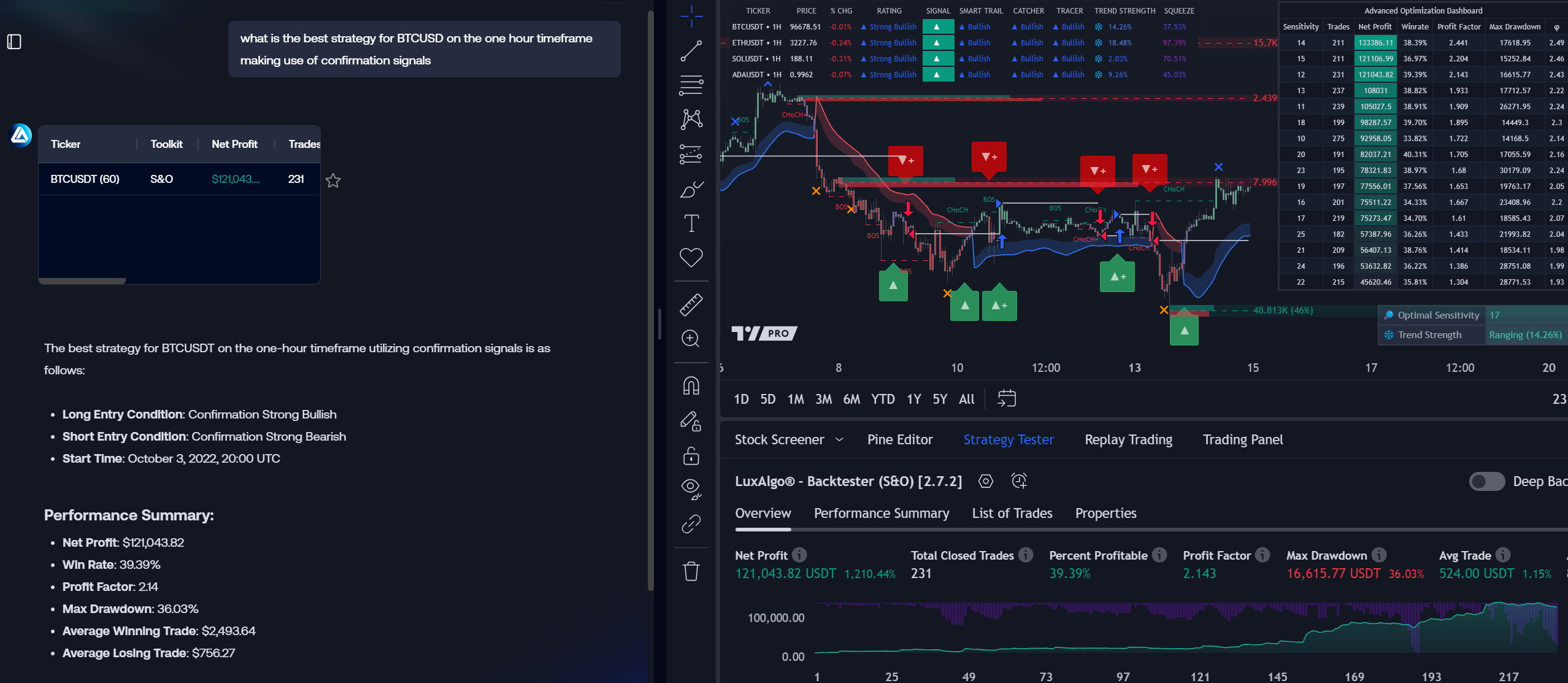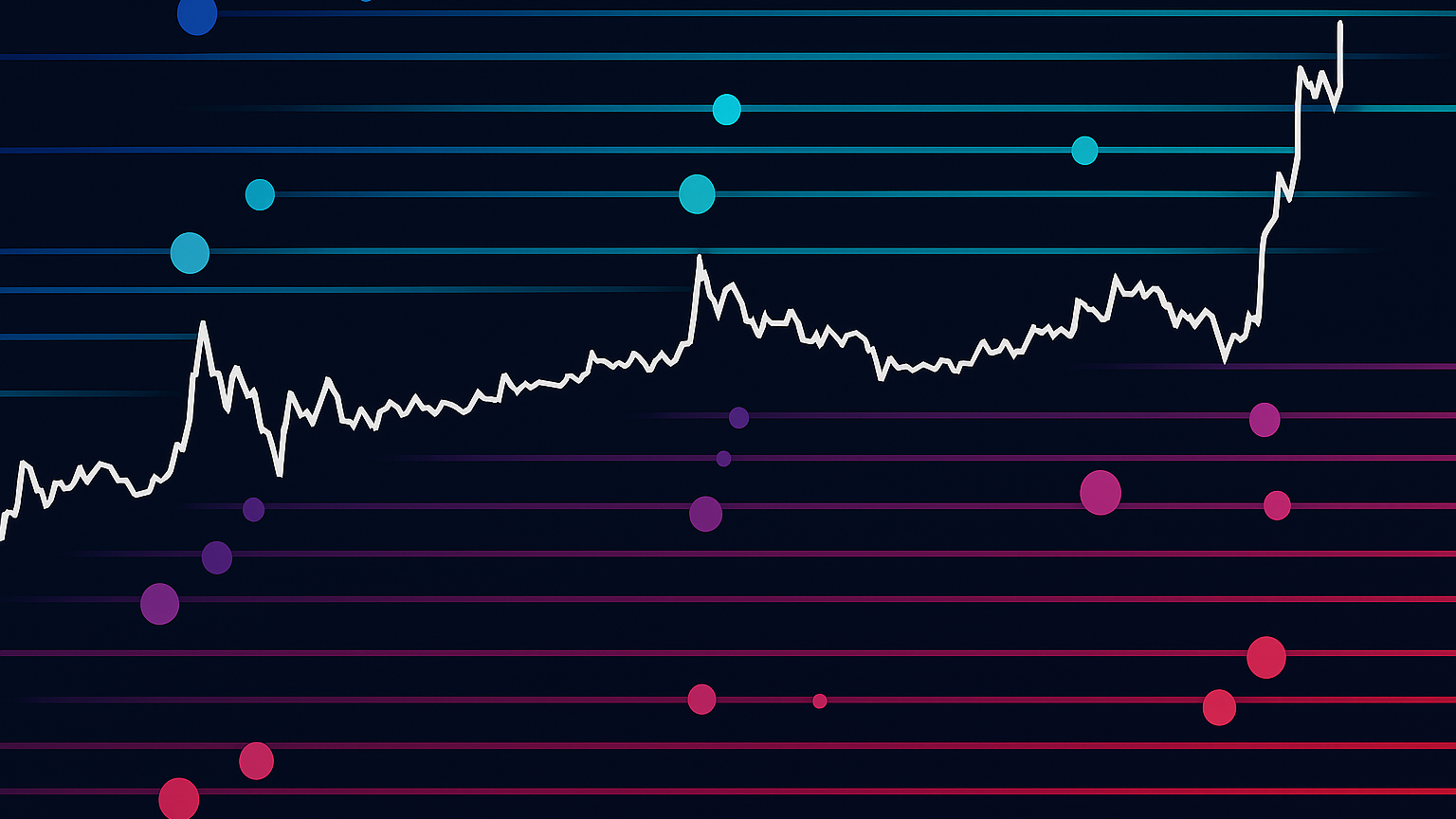Learn how profit factor measures trading performance and profitability, along with tips to improve your trading strategies effectively.
Profit factor is a key metric in trading that measures profitability by comparing total profits to total losses. A profit factor above 1 indicates a profitable strategy, with values over 1.75 often considered strong. Here's a quick breakdown:
- What It Measures: Profit earned for every dollar lost.
- Formula: Total Profits ÷ Total Losses.
- Interpretation:
- Less than 1: Losing strategy.
- 1: Break-even.
- Above 1: Profitable.
- Above 1.75: Strong performance.
To improve profit factor, focus on high-quality trades, refine your strategies regularly, and combine this metric with others like win rate and risk-reward ratio. Tools like LuxAlgo offer an AI Backtesting Assistant that optimizes trading strategies for the best profit factor within TradingView.
How to Calculate Profit Factor
Step-by-Step Guide to Calculating Profit Factor
Profit factor is a simple ratio: total profits divided by total losses. Here's how to calculate it:
- Add up all profits from winning trades.
- Add up all losses from losing trades.
- Divide the total profits by the total losses.
For example, if a trader earns $10,000 from winning trades and loses $5,000 from losing trades, the calculation is $10,000 ÷ $5,000 = 2.0, meaning the trader makes $2 in profit for every $1 lost [1] [2].
How to Interpret Profit Factor Values
Profit factor values provide a quick snapshot of trading performance:
| Profit Factor Value | Interpretation |
|---|---|
| Less than 1.0 | Unprofitable strategy |
| 1.0 | Break-even |
| Above 1.0 | Profitable strategy |
| Above 1.75 | Strong performance |
A value above 1 shows profitability, with numbers like 2.0 indicating the strategy earns double the amount of losses [1] [2].
Keep in mind that market conditions, trading styles, and the number of trades can all affect what is considered a good profit factor. Solid risk management remains essential even with a high profit factor.
Using Profit Factor to Improve Trading
Assessing Strategy Performance
Monitoring profit factor over time helps traders evaluate their strategies and identify areas for improvement. Analyzing profit factor across daily, weekly, and monthly timeframes can reveal short-term patterns, consistency, and long-term potential. Regular reviews allow you to fine-tune your approach to align with your financial objectives.
Profit Factor in Risk Management
Profit factor is not only a performance metric; it is also crucial for managing trading risks. By combining profit factor with other metrics like maximum drawdown, win rate, and risk-reward ratio, you can build a trading plan that balances profitability with controlled risk.
Comparing and Choosing Strategies
A higher profit factor generally indicates better profitability. For example, a strategy with a profit factor of 2.5 is more efficient than one with 1.8, as it generates more profit for every dollar lost [1] [2].
Using the AI Backtesting Assistant in LuxAlgo, you can automatically monitor profit factor, fine-tune entry and exit points, and backtest strategies for consistent results. Focus on strategies with profit factors above 1.75 and maintain manageable risk levels.
Tips to Improve Profit Factor
Combine Profit Factor with Other Metrics
While profit factor is useful, it doesn't tell the whole story about trading performance. Consider these additional metrics:
- Risk-reward ratio: Compare potential gains to risks taken.
- Win rate: Measure the percentage of successful trades.
- Expectancy: Calculate the average profit per trade.
Integrating these metrics provides a comprehensive view of your strategy, ensuring your decisions maximize profitability [1].
Prioritize High-Quality Trades
Improve profit factor by focusing on high-quality trades. This means executing fewer trades with clear entry and exit points, favorable risk-reward setups, and alignment with current market trends. A targeted approach leads to better decision-making and higher returns per trade [2].
Regularly Review and Refine Strategies
Continuous monitoring and fine-tuning are essential for maintaining a strong profit factor. Regular analysis of trades and strategy performance enables you to adjust risk management and ensure alignment with your objectives. The AI Backtesting Assistant in LuxAlgo provides detailed analytics and data-driven insights that help optimize your strategies [3].
Tools for Analyzing Profit Factor
Modern trading platforms offer advanced tools that simplify profit factor analysis and help refine your strategies.
LuxAlgo: AI Backtesting Assistant

The AI Backtesting Assistant allows you to simulate and optimize your trading strategies based on profit factor. By automatically adjusting parameters and running extensive backtests, it helps you find the optimal settings for maximum profitability. Learn more about these optimization features at the Optimization Guide.
Conclusion: Optimize for Profitability
Understanding and improving your profit factor is crucial for evaluating and enhancing trading performance. By accurately calculating this metric and integrating it with data-driven optimization tools, you can build strategies that consistently deliver strong results.
Focus on high-quality trades, combine profit factor analysis with complementary metrics, and leverage the AI Backtesting Assistant to refine your approach. This methodical, data-driven process will help you achieve a profit factor above the benchmark, ensuring long-term trading success.
FAQs
Is 1.7 profit factor good?
A profit factor of 1.7 indicates profitability but falls just short of the preferred benchmark of 1.75. Strategies with a profit factor above 1.75 are generally considered strong, while significantly higher values may suggest over-optimization.
How Can I Improve My Profit Factor?
Focus on executing high-quality trades, optimize your strategy using the AI Backtesting Assistant, and balance profit factor analysis with metrics like win rate and risk-reward ratio. Regular reviews and adjustments are essential for ongoing improvement.
What Role Does Backtesting Play?
Backtesting allows you to simulate your trading strategy using historical data, providing insights into how different parameters affect your profit factor. This process helps optimize your approach for better performance. For more details, refer to the Optimization Guide.






